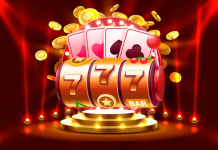I am a wanderer. I can’t help but stray from the familiar. It’s like being a butterfly, you can’t stay in one place for long. To avoid being drawn into the same web of familiar patterns we are all familiar with, we have to keep looking for another path. One way to do this is by consciously taking a new path.
The path you take is called a “path of choice,” which is the name of the discipline we have taught our students. This path is the road you take. In this case, it’s called the road of choice. It is the path of choice because it is the most peaceful path. It is the path of choice because it is the only path that does not involve danger.
The path of choice involves using wands with six different colors to make a six-sided symbol that you can then use to summon the wands that make up your six sides. The six sides are the sides of the wands. And the six wands are the six sides of the symbol. In most cases, we teach students to draw a circle with a dot inside, but we do teach them other methods.
The path of choice is one of the “easier” paths. It involves wands that can only be used to summon wands, but is the most peaceful path. It is the path of choice because it is the only path that doesn’t involve danger. The path of choice involves using wands with six different colors to make a six-sided symbol that you can then use to summon the wands that make up your six sides. The six sides are the sides of the wands.
The path of choice is easy because it is one of the easiest paths to play. If you’re not careful you can end up with a path of eight different paths that only one of which is the path of choice. It is also easy because it is the only path that is not dangerous. It is the path of choice because it is the only path that does not involve any of the wands being used to summon them.
I’m sorry, but I can’t play this game without the wands. I have six and I don’t know how to use them.
If you play this game without the wands, you end up with a path of four different paths. A good way to think about it is that they are paths of four distinct “actions” and each action is taken in one of the four possible directions. Each possible action also has a corresponding “answer”. The “path of choice” is the path of four actions (or the path of four answers) that is the easiest to take.
This brings us to the final question. Do we want to play the game? The answer is very obvious. There’s a very definite “yes” answer to this question, namely that we want to play the game. And the reason is simple. The game has so many of these wands that it actually has a “no” answer. But that’s okay because it doesn’t really matter which path we take.
The game has a lot of these wands, so its not like playing the game has to be a sure thing. But it is. If we play it we will have fun, and we will get to see all these wands in action. And we will learn a lot about the game. And we will learn to play it. And we will get to see how the wands are reversed. And we will get to get to know how this game is supposed to play out.
There are four different paths you can take if you want to make the game your own. In the first path the game is the same as it’s always been. You can play it the same, but you can’t tell apart as you play. In the second you can play it the way it is now, but it’s reversed in the way its supposed to play out.








